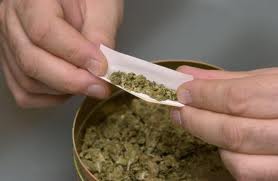Jacob Bell
New Member
WASHINGTON--An updated study released today by the Marijuana Policy Project shows that enacting medical marijuana laws in a state does not cause an increase in adolescents' marijuana use. Despite frequent claims by opponents of medical marijuana that passing such laws "sends the wrong message to children," there appears to be no correlation between medical marijuana and teen marijuana use rates. Nearly 15 years after the passage of the nation's first state medical marijuana law, California's Prop. 215, a considerable body of data shows that teens' marijuana use has generally gone down or stayed the same following the passage of medical marijuana laws. Of the 13 states with effective medical marijuana laws with before-and-after data on teen marijuana use, 10 have reported overall decreases since before they permitted seriously ill people to use marijuana to treat their conditions, some of which were within the confidence intervals. No medical marijuana state has seen an overall increase in teen marijuana use outside of the confidence intervals.
"There are so many people with serious medical conditions that desperately need marijuana to treat their illnesses and are just trying live normal lives without being treated like criminals," said Karen O'Keefe, director of state policies at the Marijuana Policy Project and a co-author of the report. "Unfortunately, there are also many people that like to scare voters and legislators with unfounded warnings that treating patients with compassion will make teens' marijuana use skyrocket. We now have substantial data showing these fears are completely unfounded. Lawmakers need to listen to the facts with regard to medical marijuana, not wild conjecture and fear tactics."
Currently, 16 states and the District of Columbia have effective medical marijuana laws, and many more are considering similar legislation.
"In the end, medical marijuana laws don't increase teen use," said Dr. Mitch Earleywine, co-author of the report and associate professor of psychology at the State University of New York at Albany.
The full report can be seen here.

News Hawk- Jacob Ebel 420 MAGAZINE
Source: enewspf.com
Contact: Contact
Copyright: eNews Park Forest
Website: Study Suggests Teen Marijuana Use Not Affected by Medical Marijuana
"There are so many people with serious medical conditions that desperately need marijuana to treat their illnesses and are just trying live normal lives without being treated like criminals," said Karen O'Keefe, director of state policies at the Marijuana Policy Project and a co-author of the report. "Unfortunately, there are also many people that like to scare voters and legislators with unfounded warnings that treating patients with compassion will make teens' marijuana use skyrocket. We now have substantial data showing these fears are completely unfounded. Lawmakers need to listen to the facts with regard to medical marijuana, not wild conjecture and fear tactics."
Currently, 16 states and the District of Columbia have effective medical marijuana laws, and many more are considering similar legislation.
"In the end, medical marijuana laws don't increase teen use," said Dr. Mitch Earleywine, co-author of the report and associate professor of psychology at the State University of New York at Albany.
The full report can be seen here.

News Hawk- Jacob Ebel 420 MAGAZINE
Source: enewspf.com
Contact: Contact
Copyright: eNews Park Forest
Website: Study Suggests Teen Marijuana Use Not Affected by Medical Marijuana


